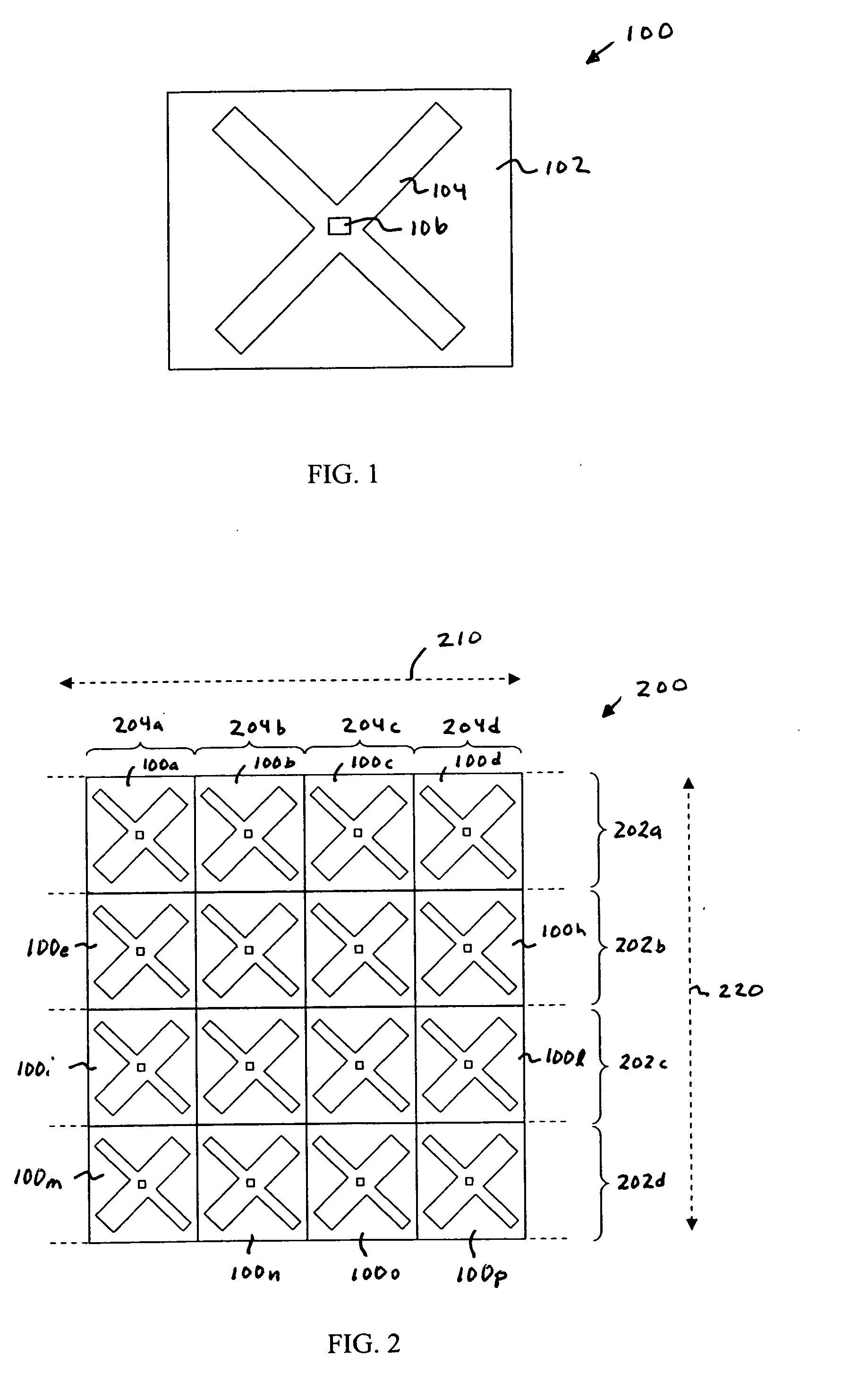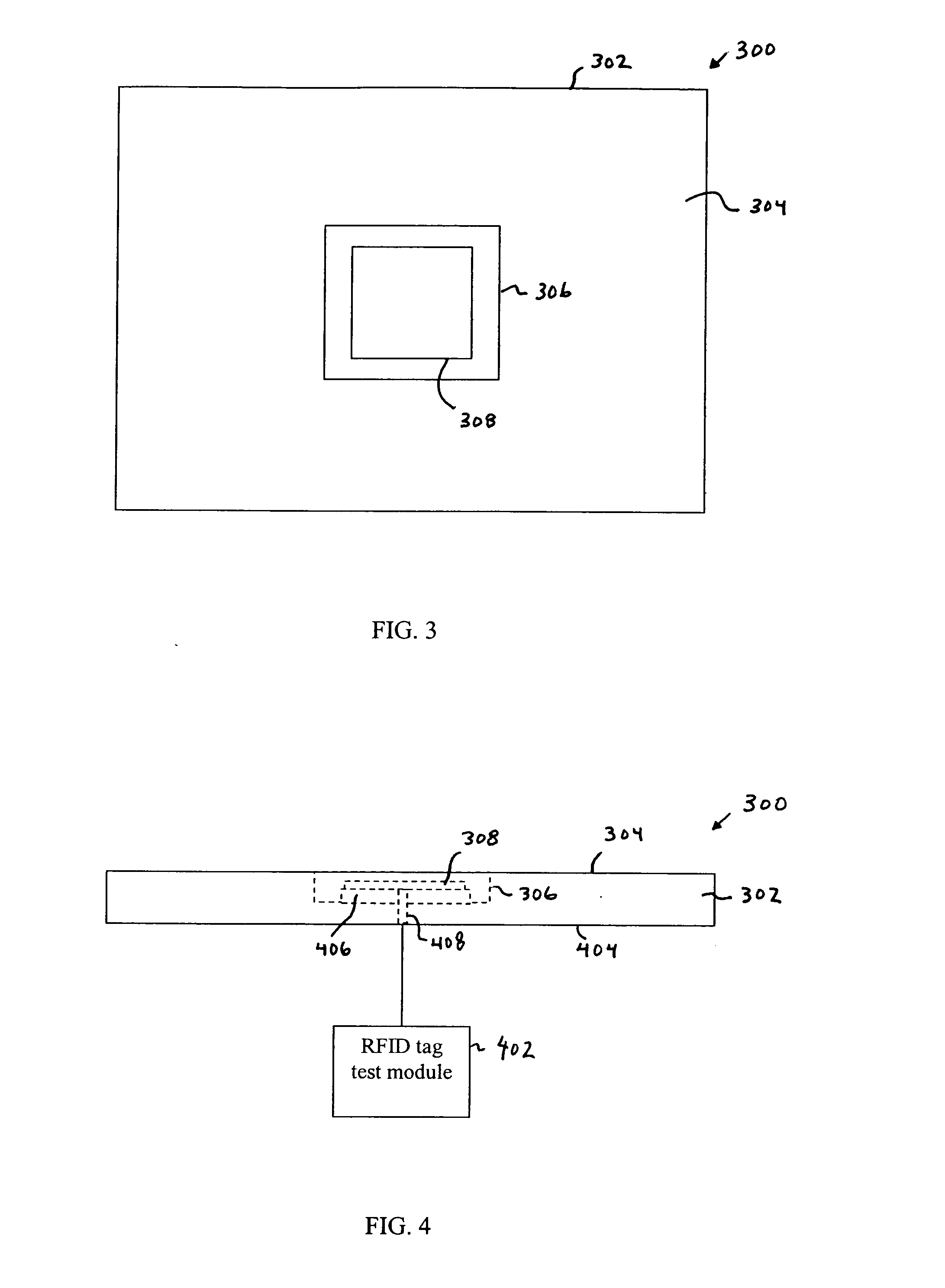System and method for multi-up inline testing of radio frequency identification (RFID) inlays
a radio frequency identification and tag device technology, applied in the field of multi-up inline testing of radio frequency identification (rfid) tag devices, can solve the problems of system failure to meet the requirements of the test system
- Summary
- Abstract
- Description
- Claims
- Application Information
AI Technical Summary
Problems solved by technology
Method used
Image
Examples
example embodiments
[0033]The present invention is applicable to any type of RFID tag. FIG. 1 shows a plan view of an example radio frequency identification (RFID) tag 100. Tag 100 includes a substrate 102, an antenna 104, and an integrated circuit (IC) 106. Antenna 104 is formed on a surface of substrate 102. Antenna 104 may include any number of one or more separate antennas. IC 106 includes one or more integrated circuit chips / dies, and can include other electronic circuitry. IC 106 is attached to substrate 102, and is coupled to antenna 104. IC 106 may be attached to substrate 102 in a recessed and / or non-recessed location. IC 106 controls operation of tag 100, and transmits signals to, and receives signals from RFID readers using antenna 104. Tag 100 may additionally include further elements, including an impedance matching network and / or other circuitry. The present invention is applicable to tag 100, and to other types of tags, including surface acoustic wave (SAW) type tags.
[0034]Embodiments de...
PUM
 Login to View More
Login to View More Abstract
Description
Claims
Application Information
 Login to View More
Login to View More - R&D
- Intellectual Property
- Life Sciences
- Materials
- Tech Scout
- Unparalleled Data Quality
- Higher Quality Content
- 60% Fewer Hallucinations
Browse by: Latest US Patents, China's latest patents, Technical Efficacy Thesaurus, Application Domain, Technology Topic, Popular Technical Reports.
© 2025 PatSnap. All rights reserved.Legal|Privacy policy|Modern Slavery Act Transparency Statement|Sitemap|About US| Contact US: help@patsnap.com



